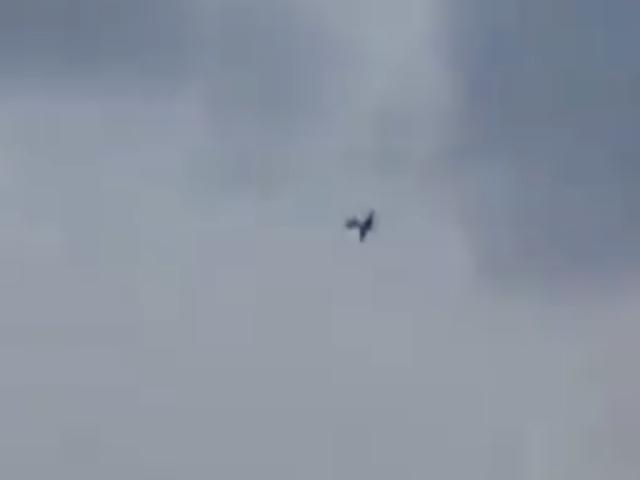The recent incident near Shlomi highlights the complex reality in the skies of northern Israel. Fighters from the Sky Rider unit of the artillery corps launched a UAV to scan the area and provide tactical visual intelligence for forces on alert near the border. The Skylark UAV, developed by Elbit Systems, was mistakenly identified by the Air Force's air defense system as a hostile UAV from Hezbollah. A Tamir missile from an Iron Dome battery intercepted it, turning it into fragments within seconds.
Recurring Mistakes and Their Impact
This incident was not an isolated case. The IDF has faced several instances where Israeli intercept missiles targeted Israeli UAVs misidentified as enemy aircraft. Senior officers have acknowledged that such false identifications have led to the downing of several Sky Rider UAVs and even flocks of birds, especially during migration seasons. When there is doubt, Iron Dome interceptors are launched, costing approximately $50,000 each.
Hezbollah’s Persistent UAV Threat
Since the skirmishes between the IDF and Hezbollah began on October 8, over 1,000 flying objects, including suicide drones and intelligence-gathering UAVs, have been launched towards Israel. About two and a half weeks ago, two Hezbollah UAVs penetrated 70 kilometers into Israeli territory, targeting the Sky Dew observation system in the Lower Galilee. Despite one UAV being intercepted, the other managed to reach the observation balloon, highlighting vulnerabilities in the defense system.
🇱🇧🇮🇱 #Hezbollah released video footage of a kamikaze drone that directly hit several #Israeli soldiers in northern Israel. pic.twitter.com/sJKkFh0jxH
— Jimmy (@backtime) June 5, 2024
Challenges with Detection and Interception
The Sky Dew system, equipped with a high-powered radar from Elta Systems, aims to improve Israel’s warning capabilities against cruise missiles and UAVs. However, it failed to provide any warning in the recent incident, turning into a psychological victory for Hezbollah. The ongoing threat has led to the recognition of the need to defend air defense systems themselves, as Hezbollah targets cameras and observation systems along the border.
Operational Difficulties and Strategic Concerns
Hezbollah's UAVs have posed significant challenges to the IDF, especially in detection, identification, and interception. Unlike rockets, UAVs have low radar signatures, fly slowly, and often at low altitudes, exploiting topographical conditions. The IDF uses Iron Dome, fighter jets, and helicopter gunships to intercept these UAVs, exposing themselves to significant safety hazards.
Netanyahu threatens escalation as Hezbollah intensifies drone tactics
— Alan Sayer 💙 (@cufcman56) June 5, 2024
https://t.co/Qf6VZcWpws
Preparing for the Future
The ongoing UAV threat has raised questions about the IDF's preparedness. Despite years of warnings, the response to Hezbollah’s drones has been hindered by slow advancement of defense processes and inadequate equipping. Although the defense industries had solutions to reduce the UAV threat, there was no significant investment in these technologies. The failed policy against drone use by Hamas also contributed to the current situation, as seen in the October 7 terrorist attack.
Future Solutions and Limitations
Part of the solution to the UAV problem lies in the upcoming Iron Beam defense system, designed to intercept aerial threats with a powerful laser beam. However, it will not fully address the UAV threat due to its limited range and weather constraints. Security sources report successes in intercepting UAVs, mainly through Iron Dome, but acknowledge that no modern air defense system can entirely handle the threat.
Looking Ahead
In the conflict against Lebanon, UAV flight times to Israel are shorter, and friendly air forces may not be available. The threat of small, agile, and deadly explosive drones, used in battles between Russia and Ukraine, is also a growing concern. These FPV drones, cheap and mass-produced, are difficult to counter with missiles or jets. The IDF must prepare for these drones, and the security system must seek effective solutions.
Northern Israel has been burning - for eight months.
— Scott Kahn of JCH (@JewishCoffeeH) June 5, 2024
Every day, Hezbollah fires missiles, rockets, drones, & anti-tank weapons at Israel's north.
When Israel responds, and people in Lebanon die, remember why it started.
Hezbollah. Hamas. The Iranian regime.
They embody evil. https://t.co/InQAXzj5cW
Conclusion
The evolving UAV threat from Hezbollah presents significant challenges to Israel's air defense systems. While current measures have had successes, continuous improvement and investment in advanced technologies are essential to address this growing threat and ensure the security of Israel’s skies.


